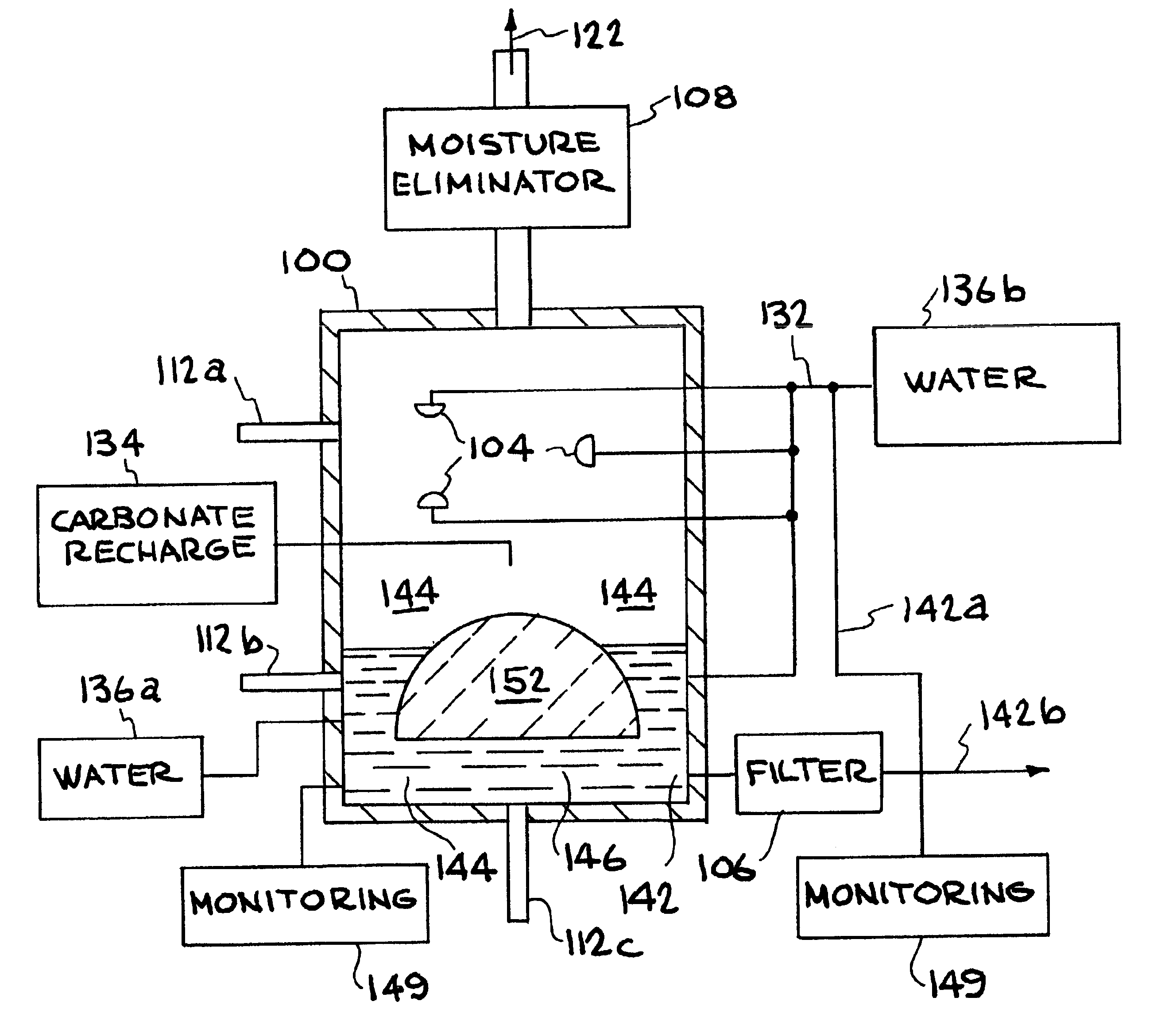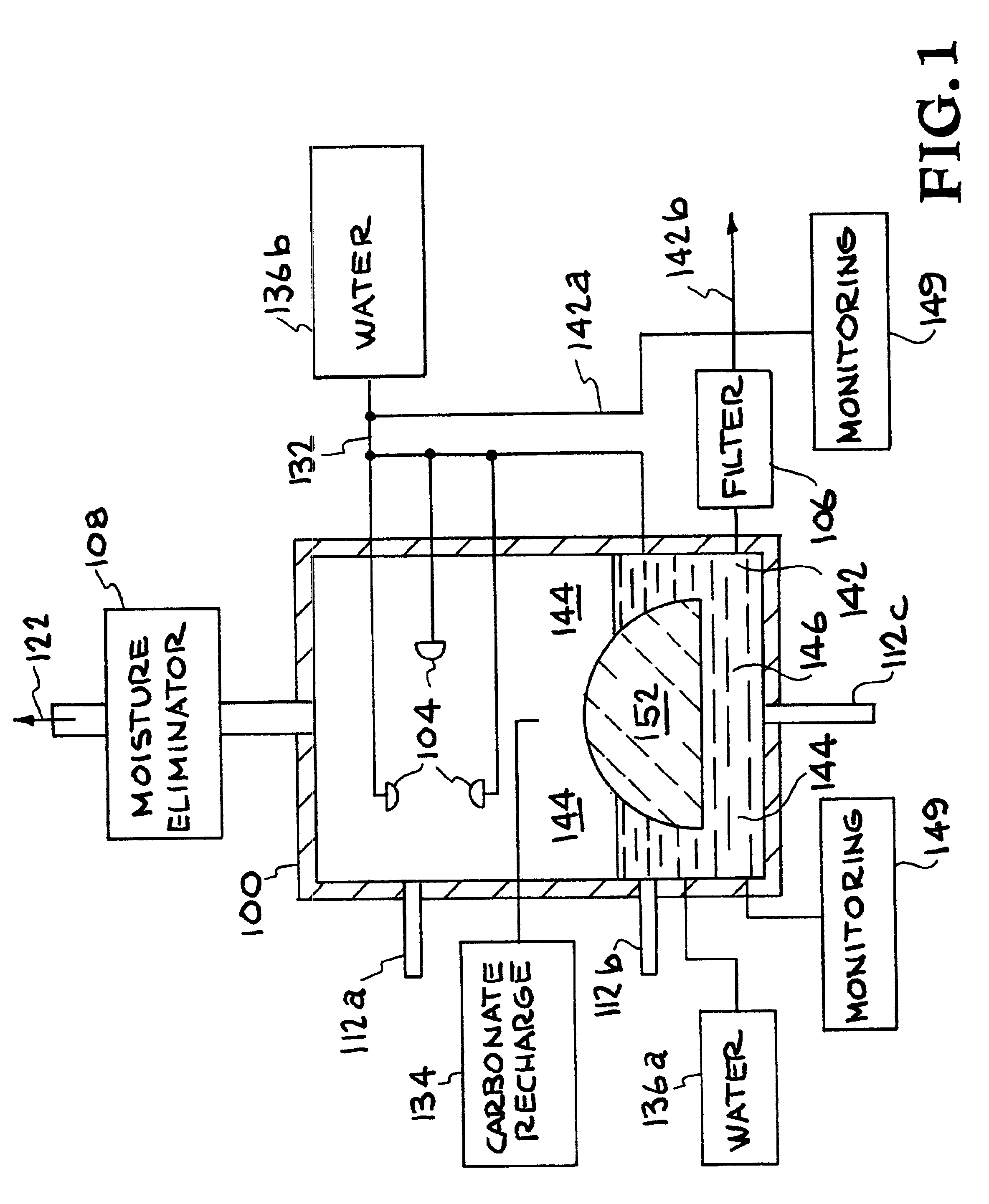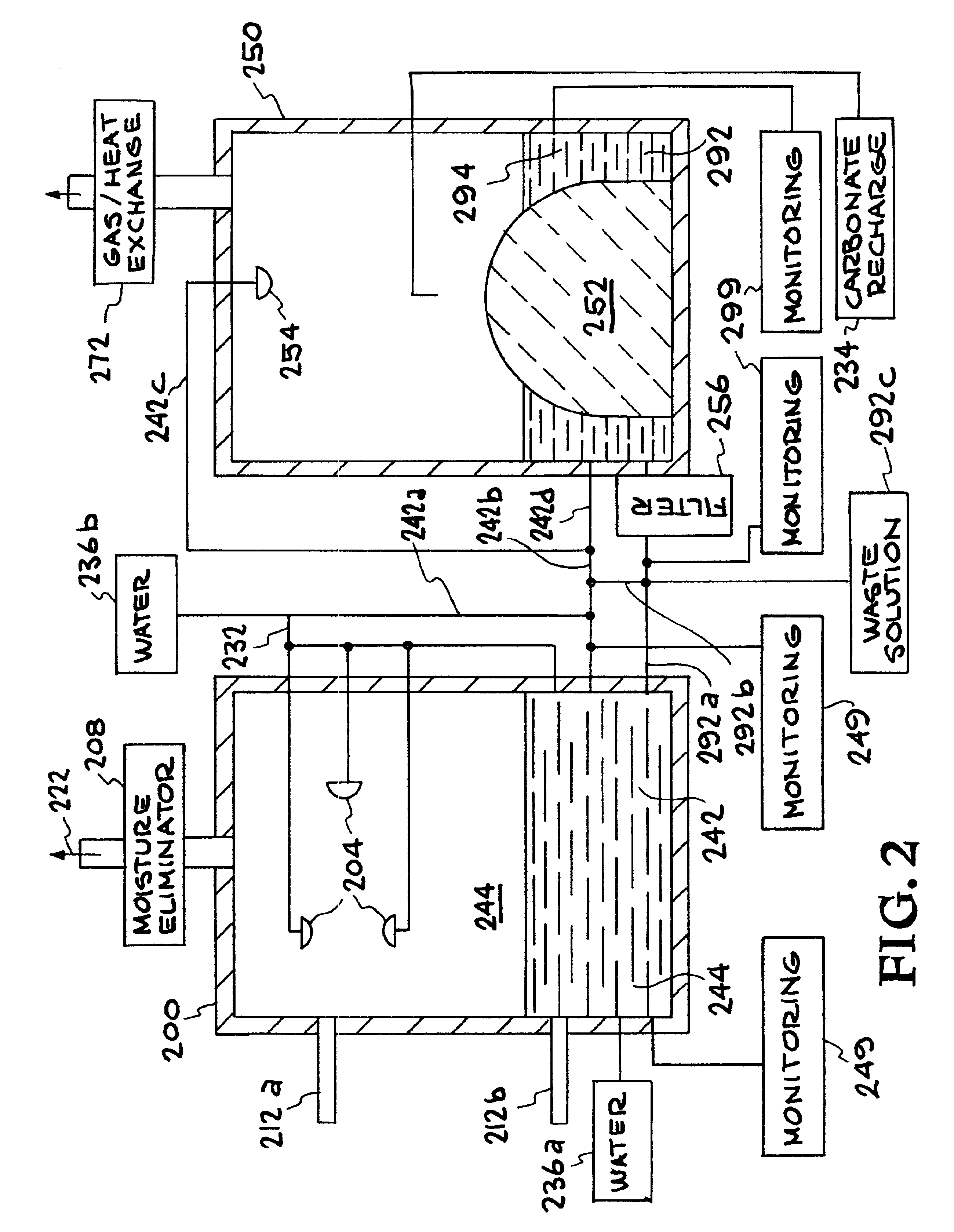Method for extracting and sequestering carbon dioxide
a carbon dioxide and carbon dioxide technology, applied in the field of carbon dioxide extraction and sequestration, can solve the problems of increasing the burden of co2 in the event, consuming the most of the co2 emitted, and little immediate impact on the rapid increase, so as to reduce the burden of co2
- Summary
- Abstract
- Description
- Claims
- Application Information
AI Technical Summary
Benefits of technology
Problems solved by technology
Method used
Image
Examples
Embodiment Construction
Definitions
[0031]alkali metals—elements found in column IA of the periodic table of elements[0032]alkaline earth metals—elements found in column IIA of the periodic table of elements[0033]carbon dioxide—CO2 [0034]carbonate—metal carbonate[0035]carbonate compensation depth (CCD)—the depth in the ocean at which the rate of carbonate dissolution equals the rate of carbonate precipitation[0036]carbonate group—CO3 [0037]carbonate ion—CO32−[0038]carbonate solution—carbonate particles in suspension or slurry, and / or dissolved in solution[0039]CO2-depleted gas stream—a gas stream where some or all of its initial CO2 has been removed[0040]dissolved carbonate—metal ions and carbonate ions in solution[0041]metal carbonate—chemical compound of the form X(CO3)m where X is any element or combination of elements that can chemically bond with a carbonate group or its multiple, wherein at least one element is a group IA, IIA, IIIA, IVA, IB, IIB, IIIB, IVB, VB, VIB, VIIB, or VIIIB element of the peri...
PUM
| Property | Measurement | Unit |
|---|---|---|
| Temperature | aaaaa | aaaaa |
| Pressure | aaaaa | aaaaa |
| Density | aaaaa | aaaaa |
Abstract
Description
Claims
Application Information
 Login to View More
Login to View More - R&D
- Intellectual Property
- Life Sciences
- Materials
- Tech Scout
- Unparalleled Data Quality
- Higher Quality Content
- 60% Fewer Hallucinations
Browse by: Latest US Patents, China's latest patents, Technical Efficacy Thesaurus, Application Domain, Technology Topic, Popular Technical Reports.
© 2025 PatSnap. All rights reserved.Legal|Privacy policy|Modern Slavery Act Transparency Statement|Sitemap|About US| Contact US: help@patsnap.com



